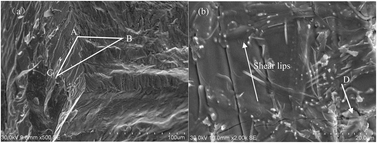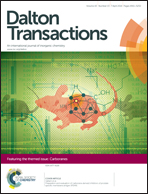Structural, mechanical properties and fracture mechanism of RuB1.1
Abstract
Polycrystalline RuB1.1 has been prepared by using an arc-melting method and its structure and mechanical properties including elastic modulus, hardness and fracture behavior have been characterized. Also, the electronic structure and bond characteristics for this compound have been investigated by first-principles calculations. The lattice parameters of RuB1.1 have been precisely determined by a Rietveld refinement. First-principles calculations show that this compound has a high bulk modulus and a big Poisson's ratio compared to RuB2. The measured hardness of ∼10.6 GPa for RuB1.1 is three times lower than the theoretical value. This low hardness can be attributed to bond characteristics such as the bonding state and orientation, and fracture mechanism, in which the features of the Ru–B bonds plays an important role in the hardness. We found that there is an isosceles triangle bonding state including the B–B and Ru–B bonds, and the two-dimensionally inclined Ru–B bonds along the a–b plane weaken the hardness and C33. The scanning electron microscopy images show that this RuB1.1 compound exhibits a twinning fracture, and this fracture model is also confirmed by first-principle calculations.


 Please wait while we load your content...
Please wait while we load your content...